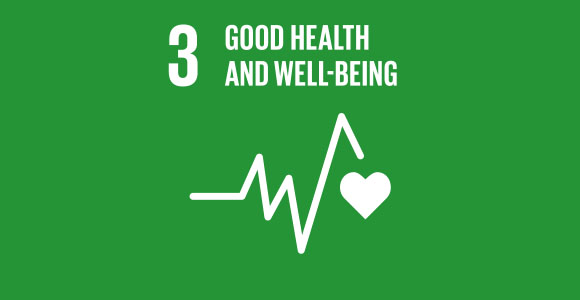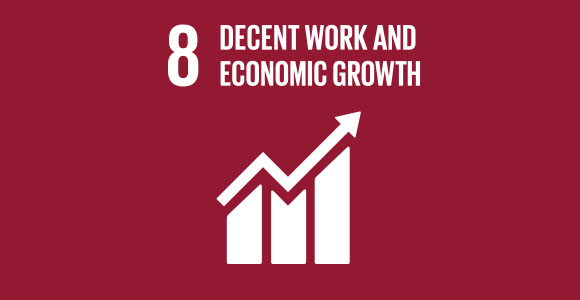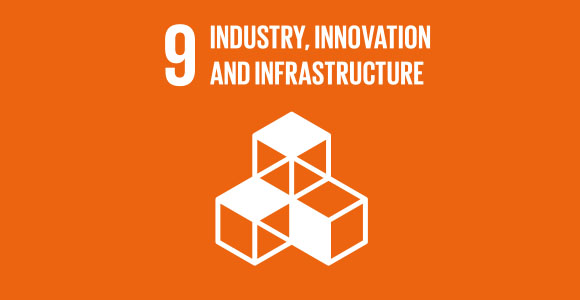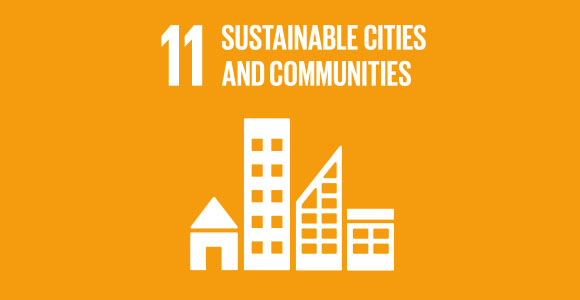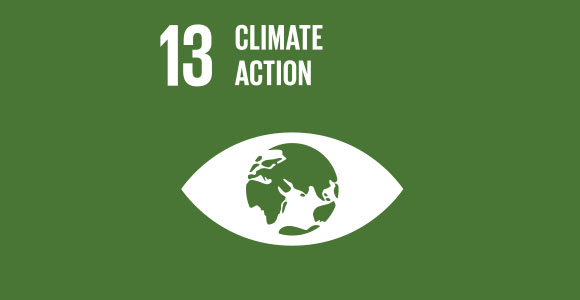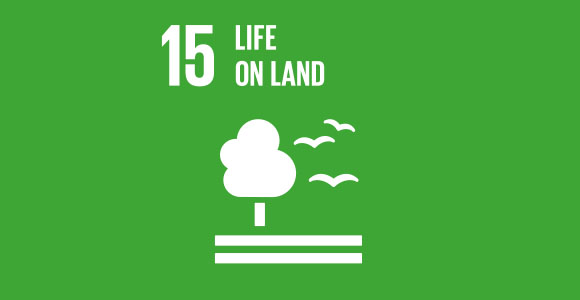Sustainable Development Goals at SDU UAS Center
Drones are high-tech tools which can be effective for tasks related to sustainable development. They can be an energy-efficient replacement of other methods of transportation, be a safer way of inspecting infrastructure, monitoring plants and animals, or simplifying processes to create jobs of a better standard.
Since 2015 our goal has been to develop drones which create benefit in society. We develop drones with a holistic viewpoint, where many of the changes they will introduce are considered, including the impact to many of the SDGs.
The possibilities of drones are manifold and many of the research projects at the SDU UAS Center work within the spectrum of the UN Sustainable Development Goals.
# 3 Good health and well-being
Drones can contribute to the SDG Goal #3, which is about getting easy access to vital treatment, medicine, and vaccines.
By using autonomous drones flying Beyond Visual Line of Sight (BVLOS) to replace the ordinary time-consuming transport of patient samples between remote hospitals, medical practices, and laboratories, we will be able to receive the results of the tests faster. This can be of great value to the patients, who can get the right treatment faster – or perhaps avoid hospitalization altogether (Healthdrone project).
#8 Decent work and Economic Growth
Drones can contribute to SDG Goal #8 by simplifying processes and creating jobs of a better standard.
Drones can achieve economic productivity through innovation and development of new technologies. One such example is using self-charging and autonomous drones to replace the time-consuming and dangerous working tasks of the people, who today inspect powerlines from helicopters or by climbing on the cables (Drones4Energy project, AerialCore project).
Similarly, drones can replace the time-consuming transport of patient samples between hospitals and laboratories (HealthDrone), and can provide farmers with accurate information to optimize the quality and yield of crops (Sqm-Farming project).
Autonomous drones will over time replace many jobs that are repetitive and risky. As has previously been the case for similar technological developments, we are creating new types of jobs where humans supervise the work performed by the drones, or even begin to work in the drone industry e.g. within development, maintenance, traffic control etc.
#9 Industry, innovation and infrastructure
Drones are a sustainable and energy-efficient alternative for tasks involving other methods of transport or for developing and inspecting infrastructure. In this way several of our projects contribute to SDG Goal #9.
By using drones to transport blood samples e.g. from the Danish Island of Ærø to Svendborg hospital, and thus replacing transport by ferry and car, we develop a faster, more energy efficient, and more flexible transport of patient samples (HealthDrone project).
Drones can also be an energy-efficient alternative to helicopters, when it comes to inspection of infrastructures such as powerlines (Drones4Energy project, AerialCore project). And they can provide the technological progress needed for an autonomous and energy-effective inspection of European infrastructure of e.g. railways, and bridges (Drones4Safety project).
#11 Sustainable cities and communities
Drones can help improve the access to and living conditions within the cities and the surrounding communities by supporting a sustainable, energy-efficient, and safe transport system.
Using drones to replace the ordinary transport of patient samples between hospitals and laboratories is, besides being an energy-efficient and environmentally friendly solution, also a solution that connects the cities and the surrounding communities and improves the living conditions (HealthDrone project).
Drones can also contribute to the implementation of SDG #11 by providing the technological progress needed for an autonomous and energy-effective inspection of European infrastructure, thereby assuring a safe, affordable and sustainable public transport system for all (Drones4Safety project).
#13 Climate action
Drones can be used to monitor the impact of climate change and how it affects fragile ecosystems, thus providing information required for future policies related to SDG #13 on climate action.
Monitoring the impact of climate change on the arctic regions is critically important, but is also a risky job for humans, due to the extreme low temperatures and the high risk of dangerous weather. Drones can perform a significant part of this monitoring. Drones can for example be launched from ships to monitor the size and movement of icebergs, which provides valuable, real-time information on the impact of climate change on the arctic (ArtDrone project). Drone-based monitoring of icebergs reduces the risk of collisions between ships and icebergs, and allows ships to take the optimal route thus reducing energy consumption.
#15 Life on land
Drones can contribute to SDG Goal #15 by monitoring animals and plants to provide census information and to reduce the environmental impact of human activities on land.
Monitoring arable land by gathering precise information about crops and weeds allows agricultural operations to be optimized, which can reduce the use of chemical spraying and thus benefit animals and plants. Drones can provide high-resolution images that, in conjunction with other data sources such as satellites, helps the farmer to optimize the use of herbicides (SqM-Farm project). Drones can be used for e.g. bi-weekly data collection most of the year, and can provide visual data regardless of cloud coverage.
Working with Engineers Without Borders
Engineers at SDU UAS Center are cooperating with Engineers Without Borders to find solutions to humanitarian challenges all over the world.
